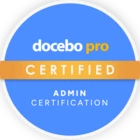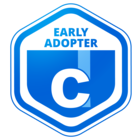By popular demand, we’ve just rolled out a new course to train you on our personalized skill development feature, Docebo Skills! ![]()
Experts have spilled lots of ink prescribing best practices for upskilling, but agree on two critical points: personalizing skilling paths, and empowering learners with high-quality opportunities for training.
That’s why we developed Docebo Skills. It invites learners to complete a self-inventory of their skills, then leverages the power of AI to deliver learning content relevant to these personalized skill profiles. Admins can manage this experience by drawing on the skills catalogs and tagging content to help it get to learners who need to consume it.
It’s a time-saving way to make skilling initiatives empowering and engaging.
But how do you get the most out of Docebo Skills? ![]()
When I created Docebo University’s course “Managing Docebo Skills,” I delved into the growing literature on skill development to find out. Here’s the result: six things you can do to drive a high-performing upskilling program using this exciting feature.
1. Consult with HR to align skill profiles with roles. Industry standards are general; organizational roles are specific. To make upskilling initiatives more concrete, engage HR. Your skill profiles should reflect job descriptions. Find out what skills are likely to be in demand in the future, and assign these capabilities from the catalog. ![]()
2. Align your content with the skills on demand. Make sure you are feeding different kinds of content -- from courses to informal assets -- into your platform so you can give learners what they need to cultivate their abilities. Tagging them accurately will ensure they facilitate growth in the right learners. ![]()
3. Look for opportunities to put skilling into practice. Take a look at your strategic plans and blueprints. What skills do your organizational goals demand? How can you mobilize valued skills in your key players? ![]()
4. Make it a dynamic experience. Plan to revisit these profiles often. Admins can monitor skilling profiles quarterly or yearly, depending on strategic needs. They can then reset the skill profiles and prompt learners to re-evaluate their interests and progress in growth areas. For instance, if a learner starts feeling more competent, she may need to adjust her proficiency level, and engage with more advanced content. ![]()
5. Involve your stakeholders. Encourage input from both managers and team members on how upskilling is working. This will personalize these initiatives and invest learners in the process. ![]()
6. Measure and reward upskilling success. Decide on what differences upskilling should make in your operation. Make it a point to recognize progress. ![]()
If you found this content useful, there’s more where that came from. Head on over to take the course at Docebo University.
Did we miss anything important? What questions do you have? How are you using Docebo Skills in your organization? Let us know in the comments!




